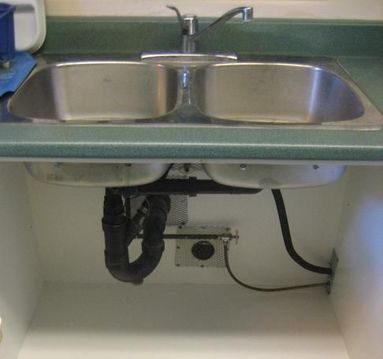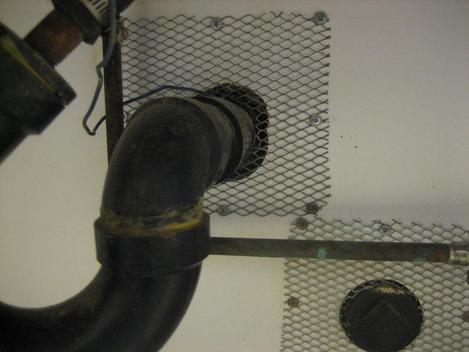Mice in My House
Q: Why would mice be attracted to my attic?
A: As predictable as the seasons, mice move into homes in the fall to find shelter for the winter and then usually return outdoors in the spring, once the weather is warm and natural food sources are abundant again. It is pretty certain that almost everyone, regardless of whether they live in an urban or rural setting or if the dwelling is new or old, have had mice over the winter at some point.
Q: How do they get in?
A: Mice can enter through any small opening, the size of a dime, generally around services such as dryer vents, utility pipes, cable wires, and common walls between the garage and the house. Also, as skilled climbers they can enter through gaps in your soffit or roof and gable vents that are not properly screened with one-half inch welded wire mesh.
Q: How can I prevent them from getting in?
A: While it is a good idea to check and repair obvious access spots each fall, it is virtually impossible to prevent mice, because of their size, from accessing your home over the winter. The good news is that you can prevent them from getting into your house proper or living quarters:
Q: Why not just kill them?
A: It is strongly recommended to stay away from the use of lethal control methods such as poisons, kill-traps, or glue traps for obvious humane reasons. Chemicals and toxic substances are not safe to use especially around children and pets. There are other reasons to seriously consider non-lethal methods. You don’t want to make the problem worse by having adults or their young dying in your walls, because of the length of time it takes the smell for even something as small as a mouse to disappear. Neither is humane trapping the answer as mice breed pretty much all year and so if a nursing female is removed, there could be a nest of babies left behind to die in a wall even in February. All this aside, the problem will remain unsolved, as mice will continue to get in unless the proofing is done.
A: As predictable as the seasons, mice move into homes in the fall to find shelter for the winter and then usually return outdoors in the spring, once the weather is warm and natural food sources are abundant again. It is pretty certain that almost everyone, regardless of whether they live in an urban or rural setting or if the dwelling is new or old, have had mice over the winter at some point.
Q: How do they get in?
A: Mice can enter through any small opening, the size of a dime, generally around services such as dryer vents, utility pipes, cable wires, and common walls between the garage and the house. Also, as skilled climbers they can enter through gaps in your soffit or roof and gable vents that are not properly screened with one-half inch welded wire mesh.
Q: How can I prevent them from getting in?
A: While it is a good idea to check and repair obvious access spots each fall, it is virtually impossible to prevent mice, because of their size, from accessing your home over the winter. The good news is that you can prevent them from getting into your house proper or living quarters:
- Check under kitchen and bathroom sink cabinets around plumbing fixture openings and use metal lath (available in building supply stores) to seal up any holes. The metal lath is ideal because it is easily bent and can be forced into holes around pipes as well as nailed to a flat surface (as show in the photo below). For spaces under sink counters that are too small for metal lath, you can use narrow pieces of waterproof stainless steel or copper scouring pads (available in grocery stores) to stuff into holes. Never use steel wool as it rusts and disintegrates. Given a mouse’s ability to chew through a variety of things, we only recommend using metal and wire repair materials.
- Check spots inside where services enter through an interior or exterior wall as mice travel through wall spaces.
- Check baseboards (including closets) and pay particular attention to the common wall between the garage and the house from floor to ceiling. What you want to accomplish is to secure any hole that permits them to enter your living quarters.
- If your basement is unfinished and mice are entering via the walls from the attic, you can either use welded wire mesh or metal lath to animal-proof the area where walls join the basement ceiling or you can use a heavy-duty weather strip on the door leading from the basement to prevent access.
- Make sure all food is put away and that boxed food supplies are stored in an inaccessible or properly animal-proofed cupboards or use glass or metal canisters to store food.
- Provide an alternative to your home. Some people have applied a novel approach to their mouse problem by placing a box of old towels and a small bowl of sunflower seeds topped up regularly in their garage to serve as a nesting site and food source. Based on the theory that if you give them what they need, it will keep them out of your house.
Q: Why not just kill them?
A: It is strongly recommended to stay away from the use of lethal control methods such as poisons, kill-traps, or glue traps for obvious humane reasons. Chemicals and toxic substances are not safe to use especially around children and pets. There are other reasons to seriously consider non-lethal methods. You don’t want to make the problem worse by having adults or their young dying in your walls, because of the length of time it takes the smell for even something as small as a mouse to disappear. Neither is humane trapping the answer as mice breed pretty much all year and so if a nursing female is removed, there could be a nest of babies left behind to die in a wall even in February. All this aside, the problem will remain unsolved, as mice will continue to get in unless the proofing is done.
STOP - DO NOT TRAP AND RELOCATE THE ANIMAL - Click here to find out why

